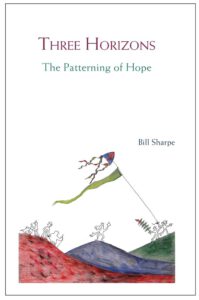Recently, I had an interesting discussion with a teacher in higher education. He had a classroom discussion about deforestation and some students were rather blasé about the topic. Their standpoint was that if you cut down a tree, you simply replant it elsewhere, so what is the problem. I mean, you can compensate your aviation kilometers too by planting trees, or not?
Did these students ever see a recently planted forest? What this actually looks like? The huge difference between an adult tree of about 20 to 35 years old, and the twigs that go by the name ‘tree’ since they eventually will grow into one if given the chance?
The teacher and I discussed the CO2 absorption capacity of adult trees as opposed to newly planted trees. Moreover, trees support ecosystems and by cutting down trees, the ecosystem is transformed to such an extent that biodiversity is lost – sometimes permanently.
A method for forest restoration is the ‘framework species method’, which has been mostly developed in Thailand. The method aims to give natural regeneration a good push by planting just 20 to 30 carefully selected tree species (Do We Need Panda’s – Ken Thompson).
Note the word ‘just’: ecosystems are in general much more diversified. Since these trees are but a mere skeleton, they need, amongst others, a high survival rate and rapid growth. The list with requirements is quite long. And even though these trees are carefully selected, for at least two years after planting, these trees need to be intensively cared for with weeding and fertilising, to give these trees a fighting change to re-establish an ecosystem. To me this looks like a wonderful job opportunity, regenerating a forest, but it may not be the future some students had in mind. Therefore, it may be better to leave the trees where they are.
According to a survey by the United Nations’ Development Program and the University of Oxford, of 1.2 million people, of which 550,000 under 18, across 50 countries, 69% of people under 18 – Gen Z – believe climate change is an emergency. Which is more than those older than 60, of which ‘only’ 58% believe it to be an emergency. The study does not include China.
This made me think of one of the things I learned about learning, where we go from being unconcious incompetent to conscious competent:
Could we make a similar diagram for climate emergency awareness:
Where would we place the people that are aware of a climate emergency? I hesitate, because of the most favoured solutions in the survey, presented in an article on Bloomberg Green, most are external to the respondents:
These are not the changes people are likely to make themselves, especially not people under 18. Most of these solutions are systemic by nature, but what is important to be aware of is the interplay between system change and behaviour change.
Dr Adam Corner of Climate Outreach pointed this interconnectedness between the both out in his 2020, May 27 blog: “The rapid, radical shifts we have witnessed during [Covid-19] lockdowns show how deeply interconnected ‘system change’ and ‘behaviour change’ are. The risks to wider society from Covid-19 have in large part been limited precisely because of the actions of many individual households committing to ‘stay home’ and socially distance.
[…]
What the lockdown period shows very clearly is that without public support, shifts in moral and social norms, and a commitment to individual behaviour changes in service of addressing a collective risk, the structural and policy shifts would simply not be achievable.
[…]
The lesson for climate change is clear: system change and behaviour change are two sides of the same coin. We need to focus on both – and also to recognise the constant interplay between them – in order to achieve global climate targets.”
And this interplay was missing from the solutions presented here. What we have to ask ourselves is how we need to change our behaviour in order to support the systemic solutions:
- How can we remove the drive to deforest?
- What changes can we make to reduce our carbon footprint, not only in our energy usage, but also in the products we buy?
- How can we support farmers that use climate friendly techniques? How can we adopt climate friendly techniques in our own gardens and in the public space?
- Which jobs and businesses contribute most to the reduction of waste and the increase of the lifespan of products? How can we support these jobs and businesses? How can we reduce waste ourselves?
- How can we reduce our transport kilometers? Think the transport kilometers of the products we buy, our commute kilometers and our recreational kilometers. How can we contribute to an improvement of public transport?
As long as we do not ask these questions, I would place us in the box ‘conscious unaware’, which is a rather insecure place to be. Because somewhere at the back of our minds we know we have to ask the questions above, but these place us in the ‘conscious incompetence’ box, which is an insecure place to be too. But the sooner we move boxes, the sooner we will find us in the ‘conscious competence’ or ‘conscious aware’ boxes, where we will feel much more confident because we know what changes we need to make and why. And eventually this may become a second nature – eventually.
henny@21steconomics.org – You can also find me on LinkedIn
Image by USDA found on Wikipedia in the public domain




